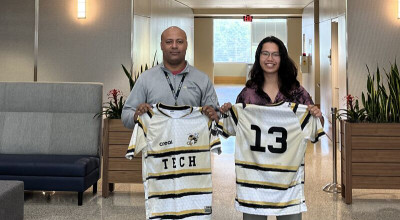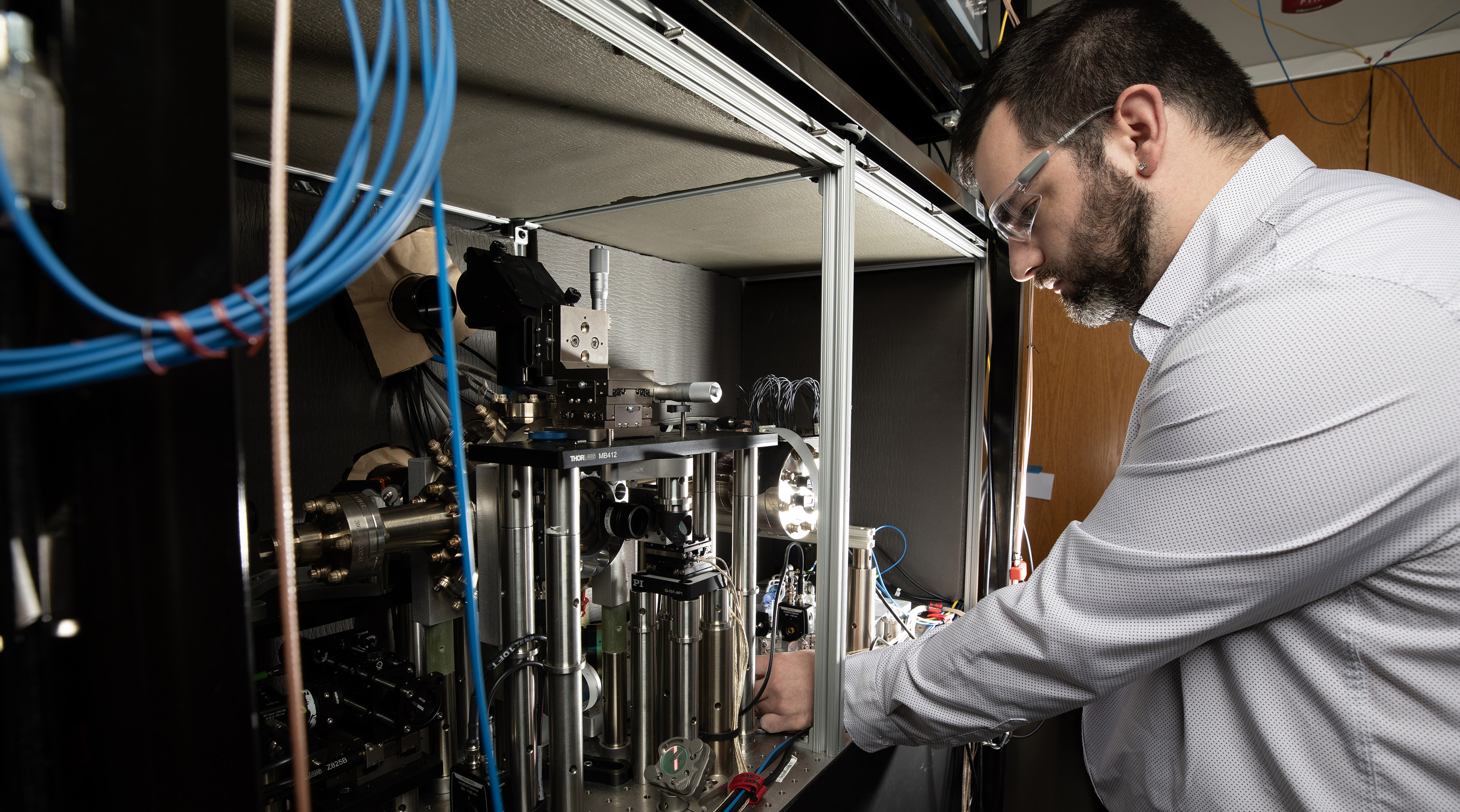
By unlocking the ability to control and read the states of ions in a tiny spinning crystal, scientists have set the stage for a new way of performing analog quantum simulations that could offer insights into the complexities of many-body physics.
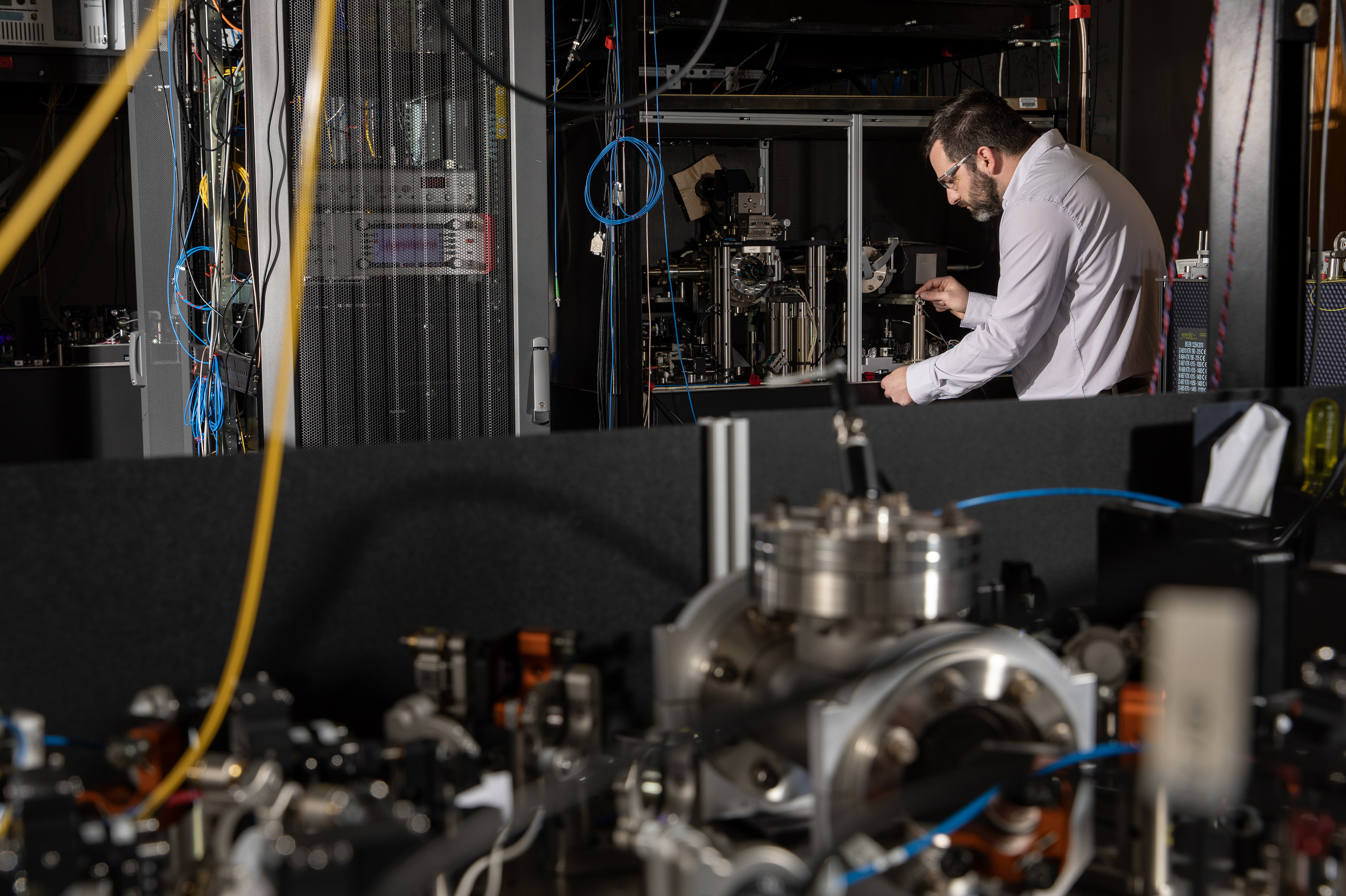
Researchers at the Georgia Tech Research Institute (GTRI) used a 2D triangular crystal of calcium ions (40Ca+) cooled to millikelvin temperatures and spinning at thousands of revolutions per second to make the ions – which would serve as qubits in the simulations – accessible to a precisely controlled laser beam that created state changes in individual ions. Each ion’s internal atomic states, two of which could be used to encode a quantum bit, were then read out using a separate laser beam that caused the ions held in the crystal to fluoresce.
The work, reported in October 2024 by the journal Physical Review Letters, is believed to be the first to demonstrate such manipulation of individual qubits in a moving crystal. The research team used a Penning trap in which the ions were confined by a combination of static quadrupole electric fields and homogeneous magnetic fields, the latter produced by two powerful rare-earth permanent magnets.
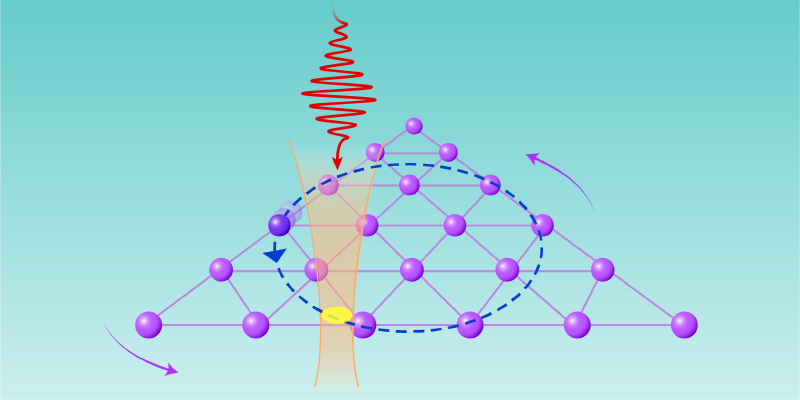
“The first enabling piece was to have what we call a rotating wall control that applied a deformation to the crystal and forced it to rotate at a given frequency such that it stayed in a single plane with all of the ion positions well localized,” explained Brian McMahon, a GTRI senior research scientist who is the paper’s lead author.
“The second piece was actually demonstrating coherent control of individual ions inside the crystal,” he added. “The crystal was spinning at tens of thousands of times per second and we pulsed a finely-focused laser beam at a certain radius of the spinning crystal with repeatable timing so we could address individual ions to apply a phase shift to one ion or another. Because of the highly repeatable timing, we knew where each ion was and how it was revolving. We were able to track the positions of each ion as the crystal was spinning.”
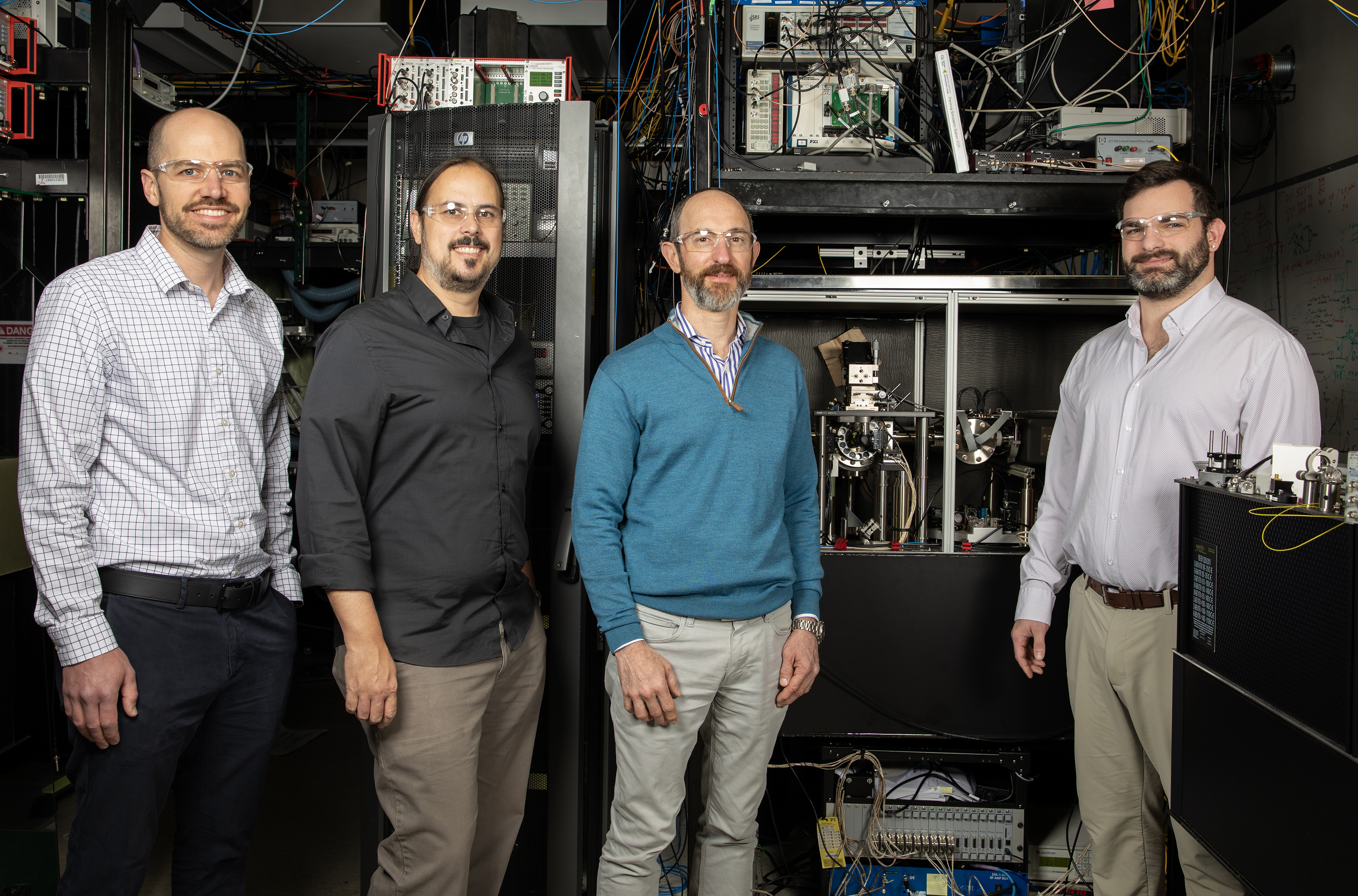
After applying the phase change to individual ions, the research team obtained images of the moving crystal by collecting each photon being scattered from a separate and much wider laser beam aimed at the trapped ions. The quantum state of each ion determined whether or not it would scatter photons from the lasers. By time-tagging the photons and knowing the positions at which they reached an ultra-fast camera that was part of the experimental setup, an image of the state of each ion in the rotating frame could be generated.
The ultimate goal of the research is to facilitate quantum simulations of many-body spin models by involving enough particles to provide sufficient complexity. Such quantum simulators represent an alternative approach to universal quantum computers for understanding the rich dynamics of interacting many-particle quantum systems.
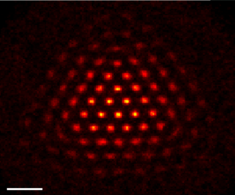
The research was supported by the Defense Advanced Research Projects Agency (DARPA), and was part of a larger effort that included researchers at the National Institute of Standards and Technology (NIST) in Boulder, Colorado. Beyond McMahon, the GTRI research team included Principal Research Scientist Kenton Brown, Senior Research Scientist Creston Herold, and Principal Research Scientist Brian Sawyer.
In designing their experiment, the researchers focused on keeping their setup small and agile, while providing the ability to optically address individual ions. For example, by using permanent magnets instead of superconducting magnets to create confinement in their Penning trap, the researchers did not need the refrigerator-sized cooling apparatus of the superconducting equipment – but at the cost of less homogeneity in the magnetic field within the ion trap volume.
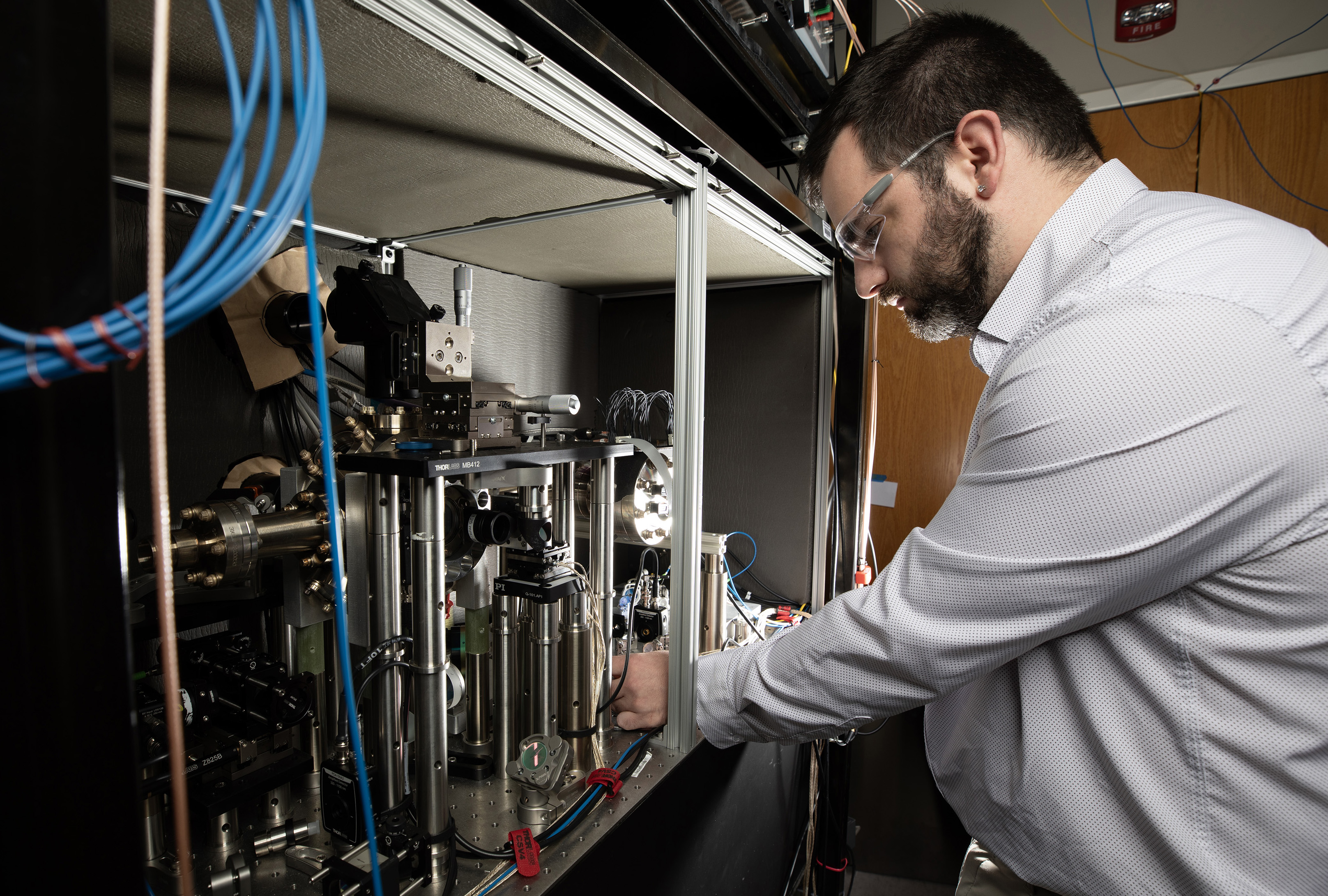
The compact size allowed a pair of printed circuit boards with 12 gold electrodes each to be placed near and in parallel to the intended ion crystal to provide the static electric fields that, combined with the magnets, held the approximately 100 trapped calcium ions in place.
“The ability to incorporate small, patterned electrodes gave us a large degree of freedom in the number of electrodes we could create and an ability to get those close to the ions,” Sawyer said. “That allowed us to have fine control over the conformation of the crystal, and in particular, its boundary. Instead of having an elliptical crystal boundary, which is more typical of these Penning traps, we were able to squeeze in a triangular configuration.”
The small size of the trap also allowed the placement of lenses very near the ions, facilitating the use of laser beams narrow enough to reach specific individual qubits by passing between ions that were not being addressed. But future research will need to make the fields more uniform to achieve higher levels of control, Herold noted.
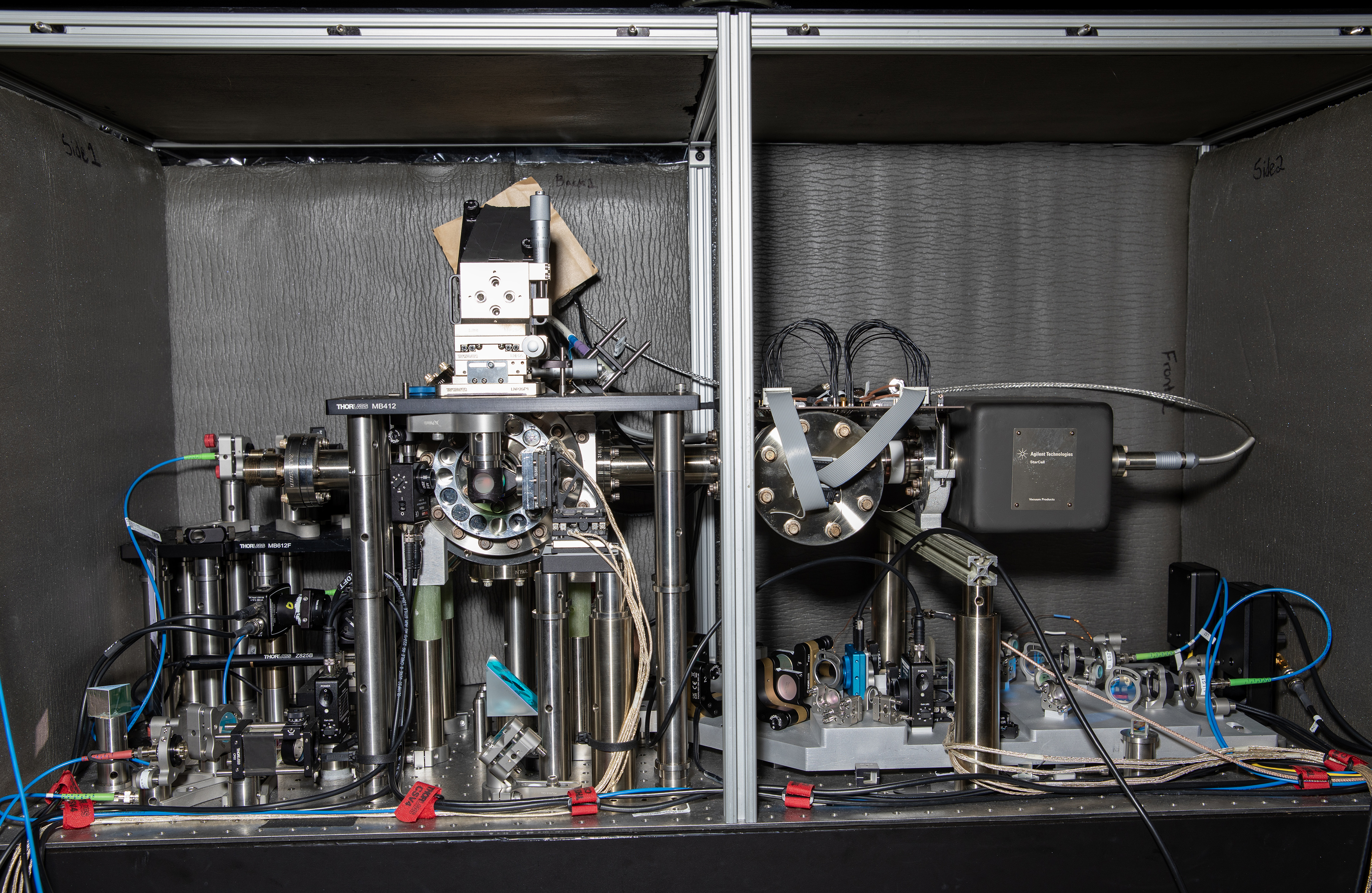
The ions within the Penning trap were cooled to approximately 10 millikelvin—near absolute zero—a temperature achieved by traditional laser Doppler cooling, in which the energy contained in each ion is gradually reduced by prompting it to emit photons carrying energy away. However, that technique cannot get cold enough to eliminate all motion in the ions.
“The ions stay where they start, but each of them is moving a little bit from the equilibrium position,” Herold said. “That little bit of motion in every camera shot meant that they weren’t in the exact same spot in the tightly focused beam in each shot, which affected how well we could repeatedly do this addressing operation. We would need further cooling of the crystal beyond the Doppler limit to improve operations.”
The researchers believe their ability to control single particles can be scaled up to perhaps as many as a thousand ions, supporting higher-level simulations.
GTRI investigates quantum computing systems based on individual trapped atomic ions and novel quantum sensor devices based on atomic systems. Researchers there have designed, fabricated, and demonstrated a number of ion traps and state-of-the-art components to support integrated quantum information systems.
This material is based upon work supported by the Defense Advanced Research Projects Agency (DARPA) under contract HR001120C0046.
Writer: John Toon (john.toon@gtri.gatech.edu)
GTRI Communications
Georgia Tech Research Institute
Atlanta, Georgia USA
The Georgia Tech Research Institute (GTRI) is the nonprofit, applied research division of the Georgia Institute of Technology (Georgia Tech). Founded in 1934 as the Engineering Experiment Station, GTRI has grown to more than 2,900 employees, supporting eight laboratories in over 20 locations around the country and performing more than $869 million of problem-solving research annually for government and industry. GTRI's renowned researchers combine science, engineering, economics, policy, and technical expertise to solve complex problems for the U.S. federal government, state, and industry.


